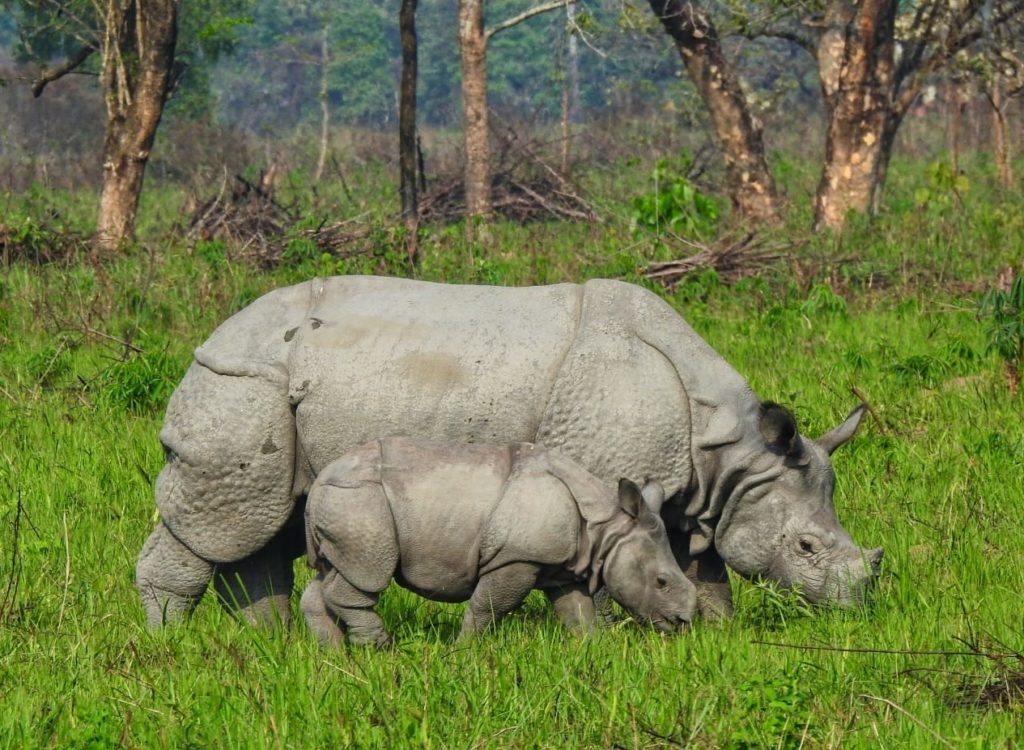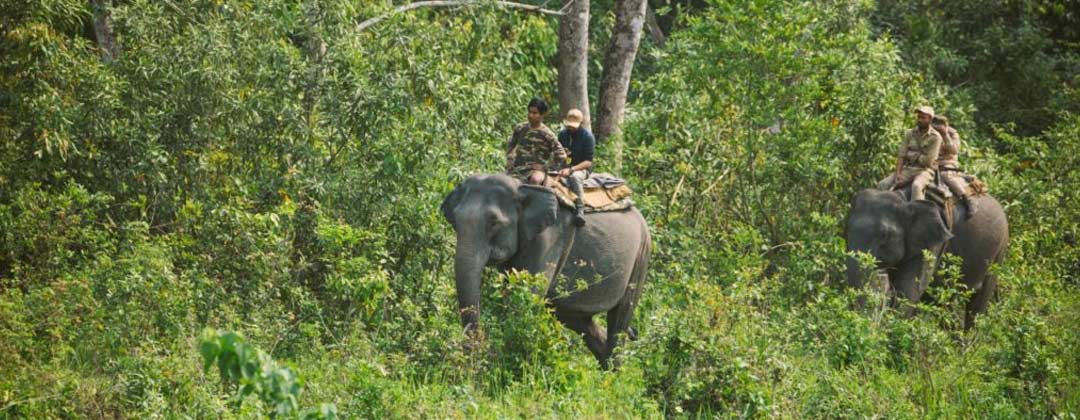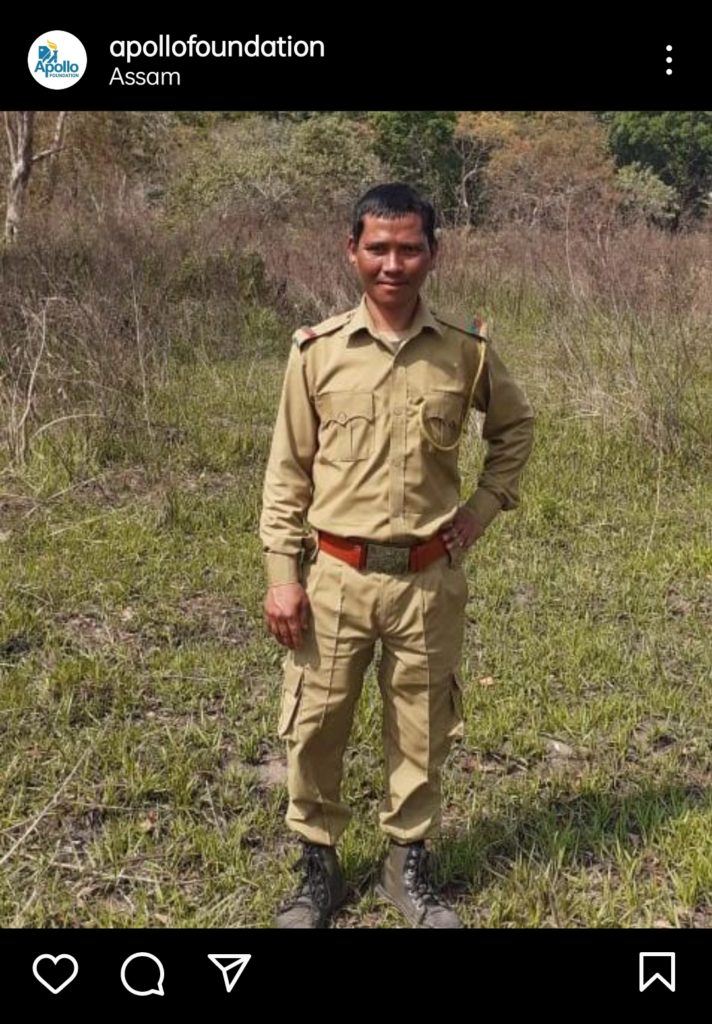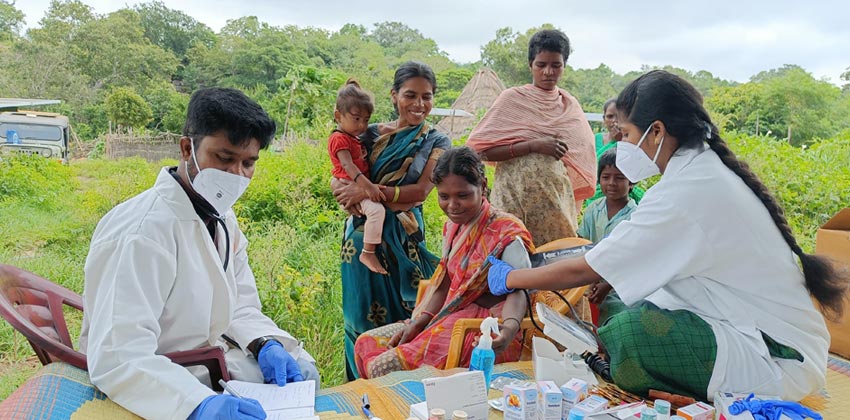It was afternoon at Manas National Park, in Assam. Arul Rabha saw the rhino in the distance, its bulky form belying its ability to crash through the jungle at an alarming speed. Just as he whispered to his colleagues about taking another route, the mass hurtled towards them, its single horn held high like a sword.
Arun cannot really remember what happened, except that his colleagues got him to a hospital in Barpeta for first aid. “I survived, but the mauling left me with three shattered bones in my back and ribs.” He and two others had been out patrolling the jungle in their jobs as forest rangers.
That was February 2021, and Arun, who works out of the park’s Bansbari range, is convinced that this past year has been his second chance at life. “It was the first time I was attacked by a rhino,” says Arun, who has spent his whole life in the jungle, living in Kahitama village within the Manas National Park, in the foothills of the Eastern Himalayas. The Park, home to up to 50 rhinos , is also famous for its elephants, big cats, and a few rare species endemic to the are such as the Assam rabbit and the pygmy hog. Arul was shifted to the Apollo Hospital in Guwahati where he spent the whole of February recuperating. Under its CSR initiative, in collaboration with the World Wildlife Federation (WWF), Apollo Hospitals offers treatment to forest rangers involved in people-wildlife conflict.
Today, he is back to doing what he loves: patrolling the Bansbari range of the park. As a game watcher, Arul is the eyes and the ears of the forest.
“I monitor the animals, where they are going, what they are eating, whether they are injured – either visibly wounded or showing telltale signs of slowing down – and report to higher authorities in the forest department. If they seem to be ill, doctors come to check up on the animals in question,” he says. “I am always on the lookout for hunters and poachers in the area, as well.”
The job is fraught with danger, often from the very animals he protects. “Two of my fellow rangers lost their lives to rhino attacks in 2017 and 2021,” he says. If not for his luck, he would have been another statistic to the larger world. He is a part of the 753-strong workforce, from field assistants and watchers to mahouts and boatmen, employed by the government; a majority of these employees are tribals who have grown up within the forest.

Yet, he perseveres, patrolling up to 20 km a day, either on foot or on elephants. “We patrol during the night as well. Animals such as elephants and rhinos may sometimes leave the park boundaries, and they have to be guided back inside using loud noises – we shout or fire blanks,” he says.
Although he started work as a game watcher in 2017, Arul has been around for much longer, learning the ins and outs of the forests with his father, who was an elephant caretaker for the park – in a way, the Manas forest raised him.
I would accompany my father in his work, and he taught me how to ride an elephant
“I would accompany my father in his work, and he taught me how to ride an elephant,” he says. Born in Gyati Gaon, Baksa district, he learnt which routes to take, and which to avoid. “Even as a child, I could identify rhinos, deer, buffalos, tigers, and elephants by their pug marks and footprints,” he says. Walking through these forests, a different route each day, and taking care of the animal denizens he shares the forest with gives him satisfaction, he says. “This is where I have grown up, this is where my father has lived and worked. This is home.”
You can meet Arul at the Manas National Park, open to the public from 6 am to 3 pm on all days.



